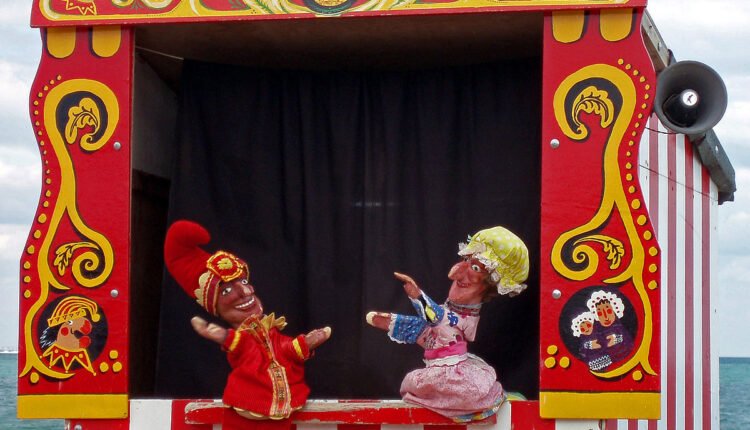Buttabommalu : A Cultural & Significance In Captivating Audiences
Buttabommalu : Also Known as puppets, were traditionally displayed in the Andhra region during wedding processions and wedding festivals, as well as during the Thirunalla and Jathara (fairs) celebrations.
These puppets are elevated and visible to everyone. They have a larger upper body and gradually taper down from the waist, resembling a large basket. This is why they are called “dolls.” The upper part of the puppet is shaped like a doll, hollow inside, with holes for the eyes and mouth. When the puppeteer inserts his hand into the hollow interior, moves the head, and makes it dance, it appears as if the puppet is acting. The puppets do not speak but interact with the audience through their movements. There are various types of puppets.
Buttabommalu Performed By Men
These puppet shows are performed by men. The dolls depict husband and wife, their love conflicts, the evil character who tries to ruin their love, the woman tempted by the evil character, the husband chasing the evil character, the wife pursuing the character, and the female character begging for forgiveness, among other scenarios. Drums are often used as musical instruments during these shows. The puppeteer wears the puppet on his legs and walks with a rhythmic movement.
Another type of puppet is the horse doll. It has a horse’s face, a body made of grasscloth and decorations, and two or three long sticks tied to a person’s feet. The sticks extend from the horse’s neck to the body, creating the illusion of a walking horse. This is a delightful sight. There are also snake dolls in the puppet shows, with someone blowing the nagaswaram (a traditional wind instrument) and dancing. Several such figures, including humorous characters like Shingi and Singadu, are present in each performance. The puppets are painted in vibrant colors, making them look very lifelike and showcasing the artistic talent of the puppet makers.
There are different methods of making puppets:
- First type: Thin bamboo pieces are split and shaped into suitable doll forms, leaving a hollow space in the middle. Dalsari cloth is tightly wrapped around the bamboo structure using a needle and thread. A mixture of tamarind seed powder and boiled flour-like porridge is applied several times to achieve the desired thickness. The puppet is then dried in the sun and coated with wood primer paint. Finally, it is beautifully decorated with oil paints.
- Second type: The head of the puppet is purchased from shops, and the rest of the body is shaped using thin iron rods and covered with feathers. By weaving and knitting, the desired shape of the puppet is achieved. The dalsari cloth is then added, followed by the same process as the first type.
- Third type: This is a newer method that requires a bit more investment. Rubber is cut into the desired shape, and plastic is added in some areas. The puppet is dressed in normal clothes and hair without the need for paints. Puppets made using this method have a natural appearance and bring joy to the viewers.
These puppet shows have been a source of entertainment and cultural significance in Andhra Pradesh, captivating audiences with their artistic display and storytelling abilities.
Also Read : Gangireddulatalu : A Prominent Folk Art Form

